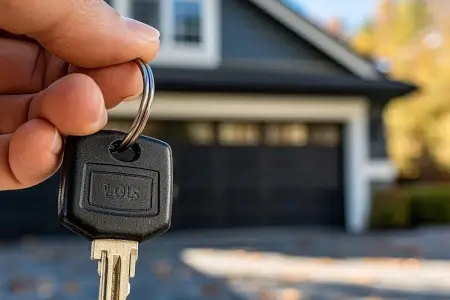Assess Your Finances
One of the first things you need to know as you embark on your house search is knowing what you can afford. This will depend on your income, credit rating, current monthly expenses, down payment and the interest rate. There’s no point wasting time and energy house-hunting before you know what you can afford. So your next step is to assess your finances.
Compare buying with renting
Learn about interest rates
Research closing costs
Learn what the lenders consider as income
Understand the impact of your present debt payments
Calculate the amount of your down payment
Figure out how much you can actually afford.
At the start of a mortgage repayment schedule, when the debt hasn’t been reduced yet, almost all of your monthly payment goes toward interest. A bit goes toward reducing principal (the amount borrowed), so that the next month you’re borrowing a bit less, and owe a little less interest. That allows more of your next payment to go toward reducing principal. However, this process is very slow in the beginning and the interest portion remains high for many years.
Between the mortgage interest and the property tax deductions, you can figure that Uncle Sam is shouldering part of your monthly mortgage payment – 28% of it, in fact, if that’s your tax bracket. Your state income tax bracket can also be added to that, before you calculate how much you save on income tax as a homeowner.
Interest rates and how they change

As you start shopping for a home loan, your first question of each lender will probably be - What’s your interest rate? How much are you charging?
Interest rates are usually expressed as an annual percentage of the amount borrowed. If you borrowed $120,000 at 10% interest, you’d owe interest of $12,000 for the first year. With most mortgage plans you’d pay it at the rate of $1,000 a month. You would also send in something each month to reduce the principal debt you owe – and the next month you’d owe a bit less interest. When your grandparents bought their home (putting at least half the purchase price down, by the way), their interest rate was probably around 4 or 5%. Rates stayed the same for years at a time. Then in the years following World War II, things became more turbulent. As economic changes speeded up, rates began to change several times a year. By the l980s, lenders were setting new rates on mortgage loans as often as once a week – and they still do today. When inflation hit a high in the ’80s, some mortgage loans carried interest rates as high as 17% – and those who absolutely needed to buy, paid that much. Rates dropped gradually through the 1990s, and by 1998 had reached their lowest rates in decades. Heading toward the millenium, home buyers appear to have the most favorable conditions for mortgage borrowing since their grandparents’ days – and without 50% down payments either.
Closing Costs

On the day you actually buy your new home, in addition to your down payment and the prepaid property tax and homeowners insurance premiums, you’ll need cash for various fees associated with the purchase. These expenses are known as closing costs and are paid by both buyers and sellers.
Some closing costs you pay up-front when you apply for a mortgage loan. That includes money for a credit check on all applicants and an appraisal on the property. Keep in mind that even if you don’t eventually receive the loan, that money is not refundable. Other closing costs are possible and should be considered when evaluating your financial situation. These may include, but are not limited to:
Title insurance fee
Survey charge
Loan origination fee
Attorney fees or escrow fees
Document preparation fee
Garbage or trash collection fees
Points
What are Points:
Points are up-front interest paid in return for a lower interest rate. Each point is one percent of the loan amount. Sometimes you can contract for the seller to pay your points.
Tip:
Consider closing costs when choosing one mortgage plan over another. The good news is that if your cash is limited, some mortgage plans allow the seller to pay some or all of your closing costs, such as title insurance, escrow fees, and points. Also certain closing costs can sometimes be added to the amount of mortgage loan you’re receiving.
Figuring out your Monthly Income
When you apply for a home loan (and even long before that, when you first speak to a REALTOR®) the first question may likely be “How much is your income?” In making this determination, lenders consider the income of all parties who will be owners of the property. Be prepared to provide a monthly accounting of all sources of income.
Figuring out your Monthly Debt
Lenders are interested mainly in your present monthly payments because they want to be sure you can handle the mortgage payment you’ll be applying for. Different mortgage plans consider payments on any debt that won’t be paid off within, for example, six months, nine months, or a year. Calculate the monthly debt of you and all your co-borrowers (if applicable).
Amount of your Down Payment

Your down payment is paid in cash and is not included as part of the loan amount. The bigger your initial down payment, the smaller your loan, which reduces the amount of your payments.
How much you’ll put down depends on the cash you have available and the amounts you’ll need for closing costs and prepaid property taxes and homeowners’ insurance. Mortgage plans have various down payment requirements and they can range from 0% down on a VA (Veterans Administration) loan to between 3 and 5% down on a FHA (Federal Housing Administration) loans to 20% down, the traditional amount for a conventional loan. In addition, special state programs for first-time home buyers may set different sums, which are usually lower than conventional financing. If you put less than 20% down on most loans, you’ll be asked to protect the lender by carrying private mortgage insurance (PMI). Carrying PMI ensures that the debt is repaid if you default on the loan. This adds approximately an extra half a percent onto the loan.FHA mortgages, in return for their low-down-payment requirements, also charge for mortgage insurance premiums (MIP).
How Much House Can You Afford?

The amount of loan for which you qualify is based on two different calculations. Using what are known as qualification ratios, lenders evaluate your income and long-term debts to determine a “safe” amount for your mortgage payments. A fairly standard ratio is 28/33. Certain mortgage plans sometimes use more liberal ratios – for example, the FHA currently uses 29/41.
Here’s how it works: With a 28/33 ratio, you’d be allowed to spend up to 28% of your gross monthly income for mortgage payments. The lender will then run a different calculation. This one is your loan payment and debt payments combined, which may not exceed 33% of your gross monthly income. To calculate exactly how much you may borrow, you also need an estimate of current interest rates. For Example: Suppose you had $1,000 a month for mortgage payment; at 7% that would let you borrow about $160,000 on a 30-year loan. At 6% the loan amount would be nearly $175,000. If your rate were 8%, the loan amount would be a bit less than $150,000.As part of this calculation, you also need to estimate and include the property taxes, homeowner’s insurance, and Homeowner Association fees (if applicable) you might need to pay, which are considered part of your monthly expense.


